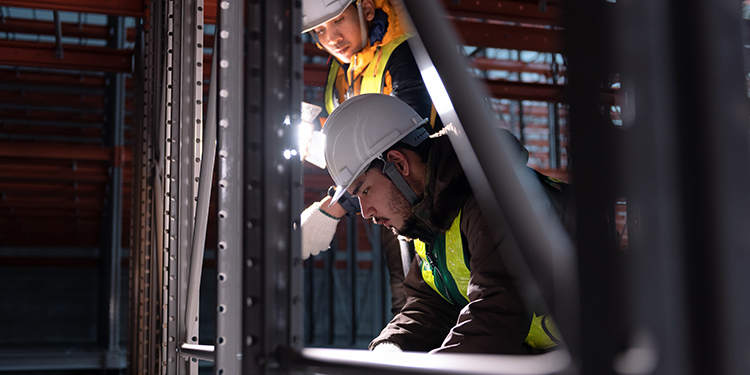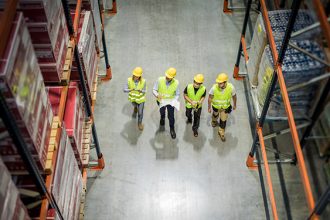The Three Types of Engineers You Need on a Project

Before you move forward with your rack design project, get these three types of engineers on board.
You have plans to install a new racking system, whether within an existing facility or within a new, greenfield build. There’s a lot to learn and know before you are set and ready to use your new equipment. One is that you need to involve three key professionals in the process: a rack engineer, a slab engineer and a fire protection consultant. Each plays a key role in ensuring your rack will be not only functional, but safe and within code.
Here’s a look at the role each one plays in your design and installation:
Rack engineer
Rack engineers understand storage needs, applications and options available to different warehouses. They bring a unique knowledge to the planning process, understanding the differences in selective pallet rack to gravity flow racks, for instance. When they work with you and the other engineers on site, they can determine what your needs are, design them properly, and oversee installation. To find a qualified rack engineer, you’ll want to inquire about past experience, check referrals, and learn about the types of projects they have worked on to see if it’s the right fit for your application. They will know the latest RMI specifications, and ensure you are building your rack to meet them.
Slab engineer
It might be easy to overlook this type of engineer, but along with racking, a slab engineer is a key player. One of the chief reasons is the variety of seismic zones across the country. What works in Kansas might not work in California, for instance. A good slab engineer can determine what your seismicity is, and what types of racks can best serve you without risk of seismic damage. Another reason to have a slab engineer on board is to determine if the slab can withstand the loads you plan to place on it. This engineer may even play a role in determining the right concrete mix and ensuring it is poured to the proper thickness.
Fire protection consultant
Another integral part of your design team, a fire protection consultant can get involved from day one to help determine your ideal protection scheme. He or she will understand the current codes—which change every three years—the types of racking you are considering and how that relates to the fire protection design, and what type and quantity of fire protection you need. This will include sprinkler systems, extinguishers, and the actual rack design.


